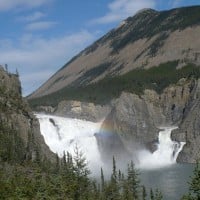Top 10 Natural Landmarks and National Parks In Canada
Canada is not only known for ice hockey and maple syrup, the country is also famous for its beautiful scenery with its many natural landmarks and national parks filled with a variety of trees, plants and animals. Let's see which areas you should visit on your next trip.
Niagara Falls is the most well known natural wonder in Canada, spanning the border between the province of Ontario in Canada and the state of New York in the United States. It is made up of three waterfalls, the largest of the three is Horseshoe Falls, also known as Canadian Falls, which straddles the international border of the two countries. The smaller American Falls and Bridal Veil Falls lie within the United States. Long before the international boundaries, this seismic water feature was crafted out of melting glaciers and a giant fault in the riverbed some 10,000 years ago. Today the trio of waterfalls forms a massive U-shape that pours 3160 tons of water into the Niagara Gorge every second. The best views of the Niagara Falls is considered to be on the Canadian side of the border.
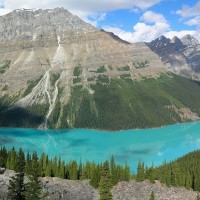
Banff National Park is Canada's oldest national park, established in 1885. Located in Alberta's Rocky Mountains, 110–180 kilometers west of Calgary, Banff encompasses 6,641 square kilometers of mountainous terrain, with many glaciers and ice fields, dense coniferous forest, and alpine landscapes.
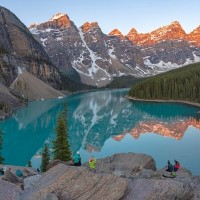
Moraine Lake is a glacially fed lake in Banff National Park, 14 kilometres outside the village of Lake Louise, Alberta, Canada. It is situated in the Valley of the Ten Peaks, at an elevation of approximately 1,884 metres. Although Lake Louise is more well known, Moraine Lake is considered by many to be the most beautiful of the two lakes. Moraine Lake gets its beautiful brilliant blue-green waters from minerals melted from the glaciers.
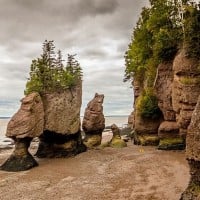
The Hopewell Rocks, also called the Flowerpots Rocks, are situated on the upper reaches of the Bay of Fundy in New Brunswick. These eroded "flowerpot" formations stand in water or on dry land, depending on the time of day. The coastal Fundy Trail Parkway offers lookouts and beaches. You can walk around these unique formations at low tide.
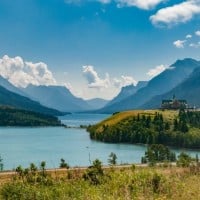
Sprawling along the Alberta-Montana border, Waterton is an official Biosphere Reserve, World Heritage Site and the first multinational dark sky park in the world, committed to stargazing. It's known for its chain of lakes, including the large Upper and Middle Waterton lakes, flanked by the Rocky Mountains. There are even bison grazing near the Bison Paddock Loop Road.
The blue sky goes very well with the water in this picture. It looks like somewhere set in an island, or maybe an atmosphere for a fantasy video game.
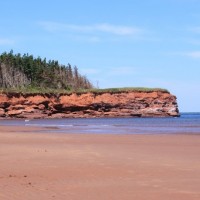
Because of the high iron content in the soil around Prince Edward Island, certain parts around the shores of this Canadian province are emblazoned with red sandstone cliffs, red clay roads and rose-tinted sand beaches. Cavendish Beach is one of the most popular spots for people who want to appreciate the view.
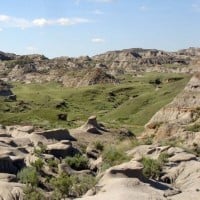
Dinosaur Provincial Park is a UNESCO World Heritage Site situated a two hour drive east of Calgary, Alberta. The park is situated in the Red Deer River valley, which is noted for its striking badland topography, and abundance of dinosaur fossils. Seventy-five million years ago, this area was a subtropical paradise thick with jumbo palms and ferns and dinosaurs, as the name suggests.
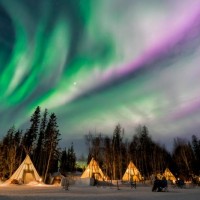
Yellowknife is the capital of the North West Territories and the surrounding landscape is known for being a hot spot for the Northern Lights during the winter months.
This looks like a brilliant place to relax in tents during the night with the northern lights around. What a stunning picture.
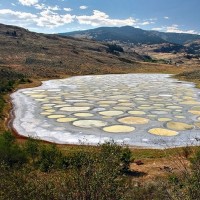
This bizarre lake is situated 380km east of Vancouver in Osoyoos. These spots are the result of mineral-rich water, much of which evaporates during the hot summer months, leaving behind a concentration of these minerals that form the lake's spots. They even shift in size and color throughout the warmer months as the mineral ratios change with further evaporation.
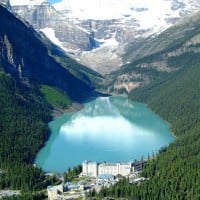
Lake Louise is a hamlet in Banff National Park in the Canadian Rockies, known for its turquoise, glacier-fed lake ringed by high peaks and overlooked by a stately chateau. This lake is very well known and is considered one of the most popular destinations in Canada, most notably during winter between December and March as Lake Louise offers one of the largest and most scenic ski resorts in North America.
I love how the lake is set in the middle of some mountains with trees and buildings. It would make a brilliant view if someone was travelling on a boat in the same place.
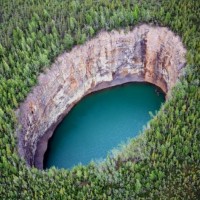
In the North West Territories, there are a few other sinkholes, but none are more impressive than the Bear Rock Sinkhole which was formed by the collapse of a vast cave under the earth's surface. For the Indigenous Dene people, Bear Rock is a highly sacred sight. According to legend, a mythological figure known as Yamoria killed giant beavers who were terrorizing the people, hanging their skins on the rock.
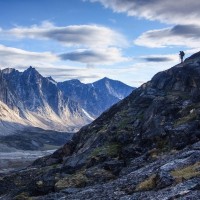
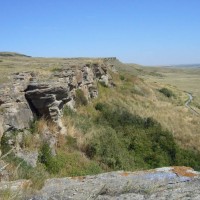
Head-Smashed-In Buffalo Jump is a buffalo jump located where the foothills of the Rocky Mountains begin to rise from the prairie 18 km west of Fort Macleod, Alberta, Canada on highway 785. It is a UNESCO World Heritage Site and home of a museum of Blackfoot culture. The cliff itself is about 300 metres (1000 feet) long, and at its highest point drops 10 metres (33 ft) into the valley below.
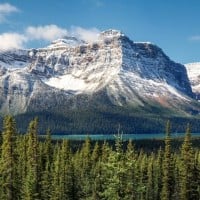
The Canadian Rockies mountain range spans the provinces of British Columbia and Alberta. With jagged, ice-capped peaks, including towering Mt. Robson, it's a region of alpine lakes, diverse wildlife and outdoor recreation sites.
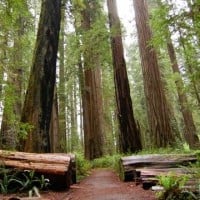
You'll find this endangered remnant of an ancient Douglas fir ecosystem within MacMillan Provincial Park, 175km north of British Columbia's capital city, Victoria, on Vancouver Island. This biological treasure was thousands of years in the making, with some remaining trees estimated to be 800 years old, towering 75m high and nine meters in circumference.
